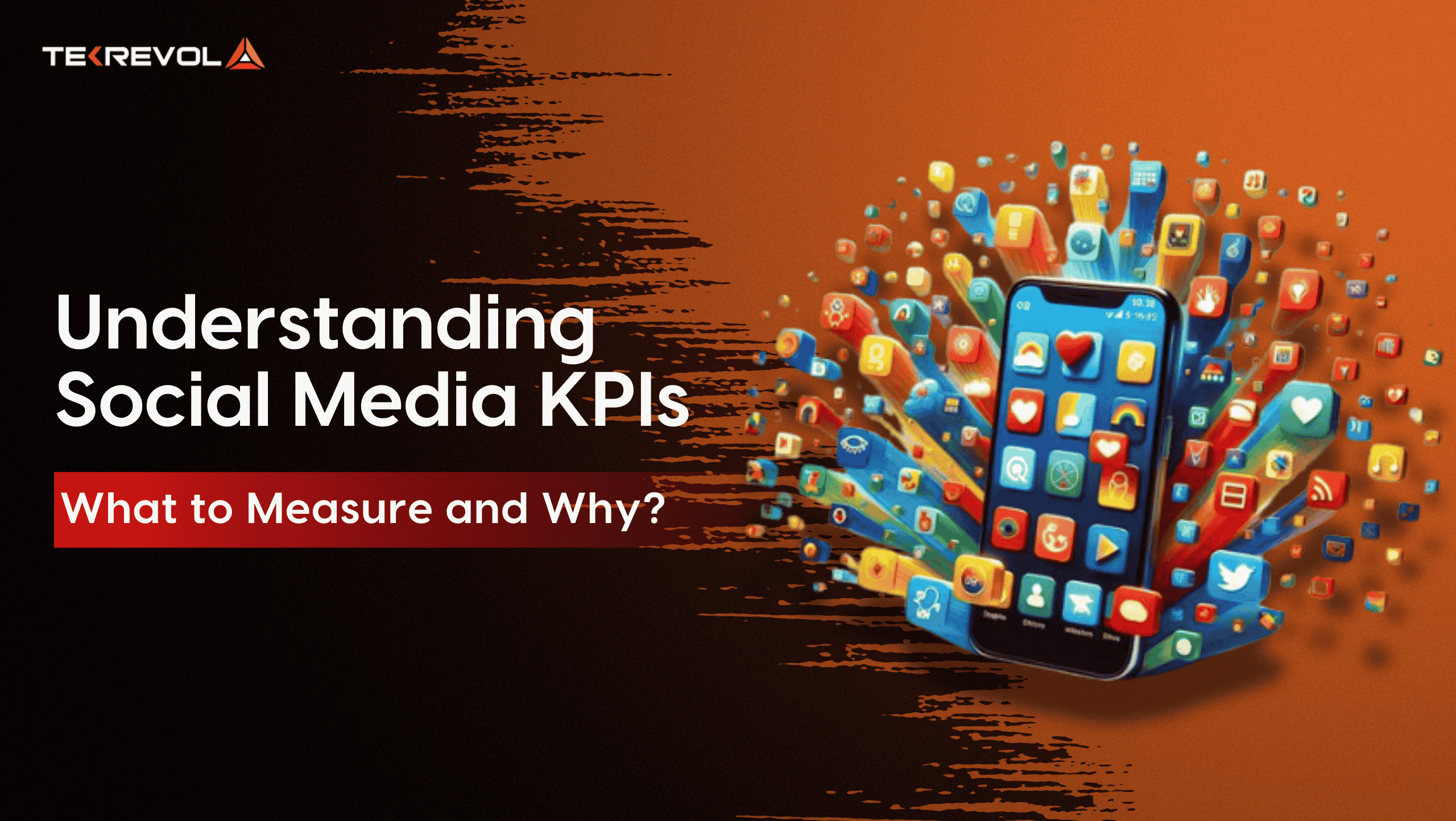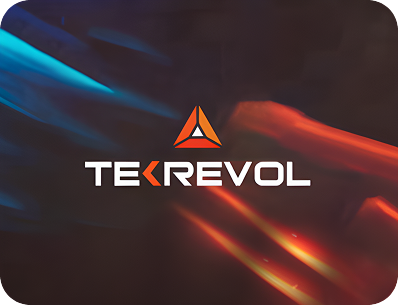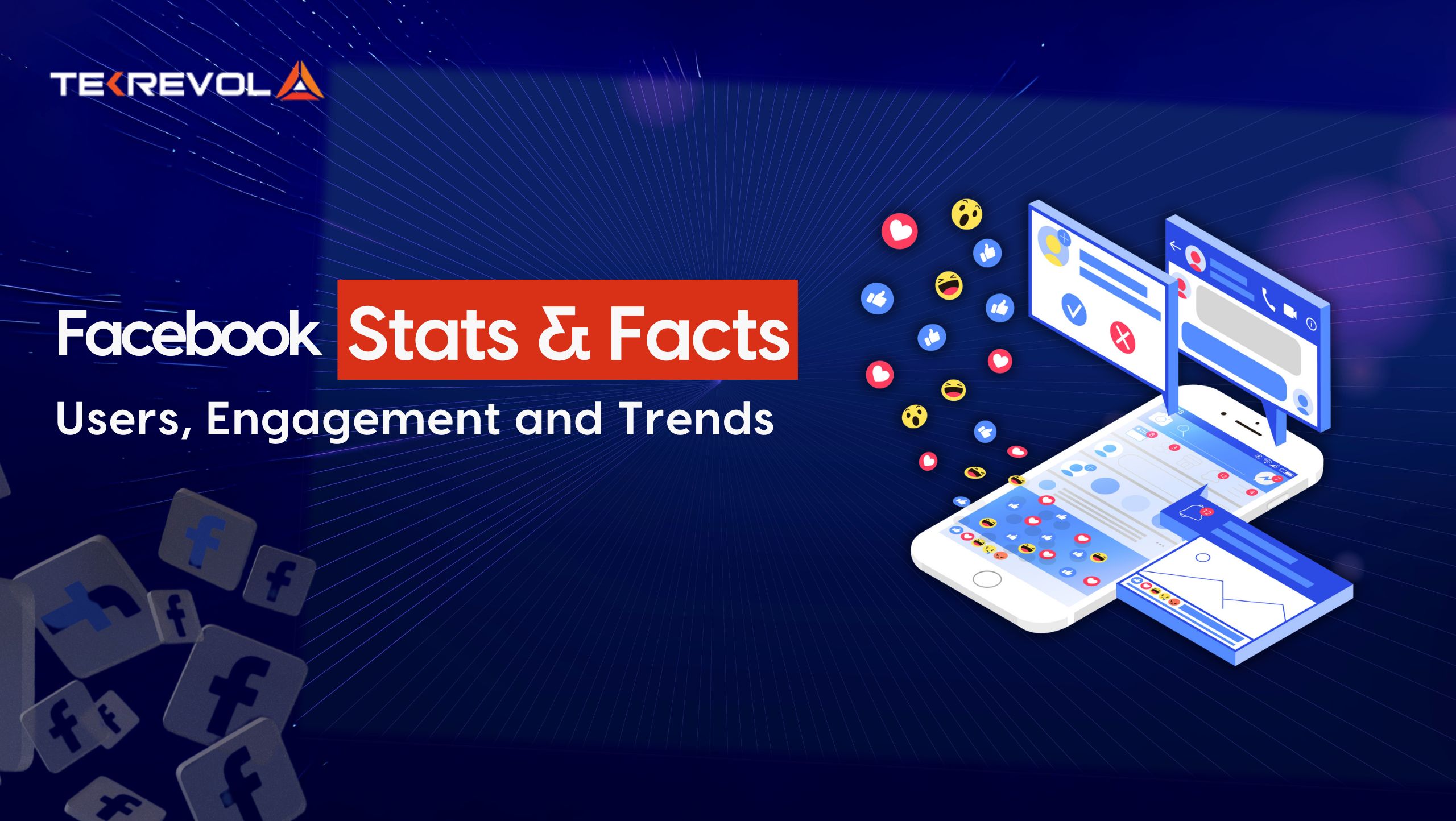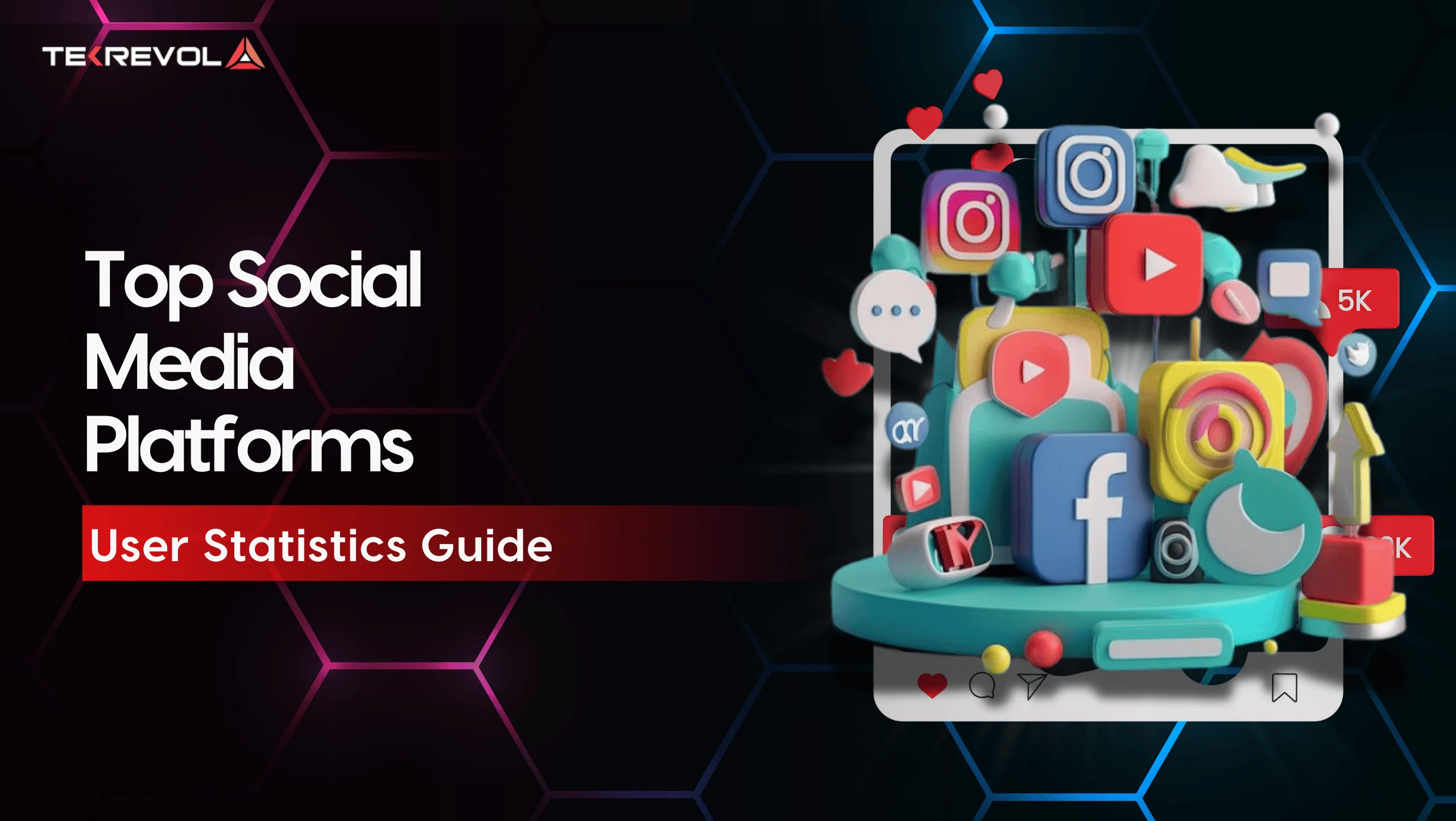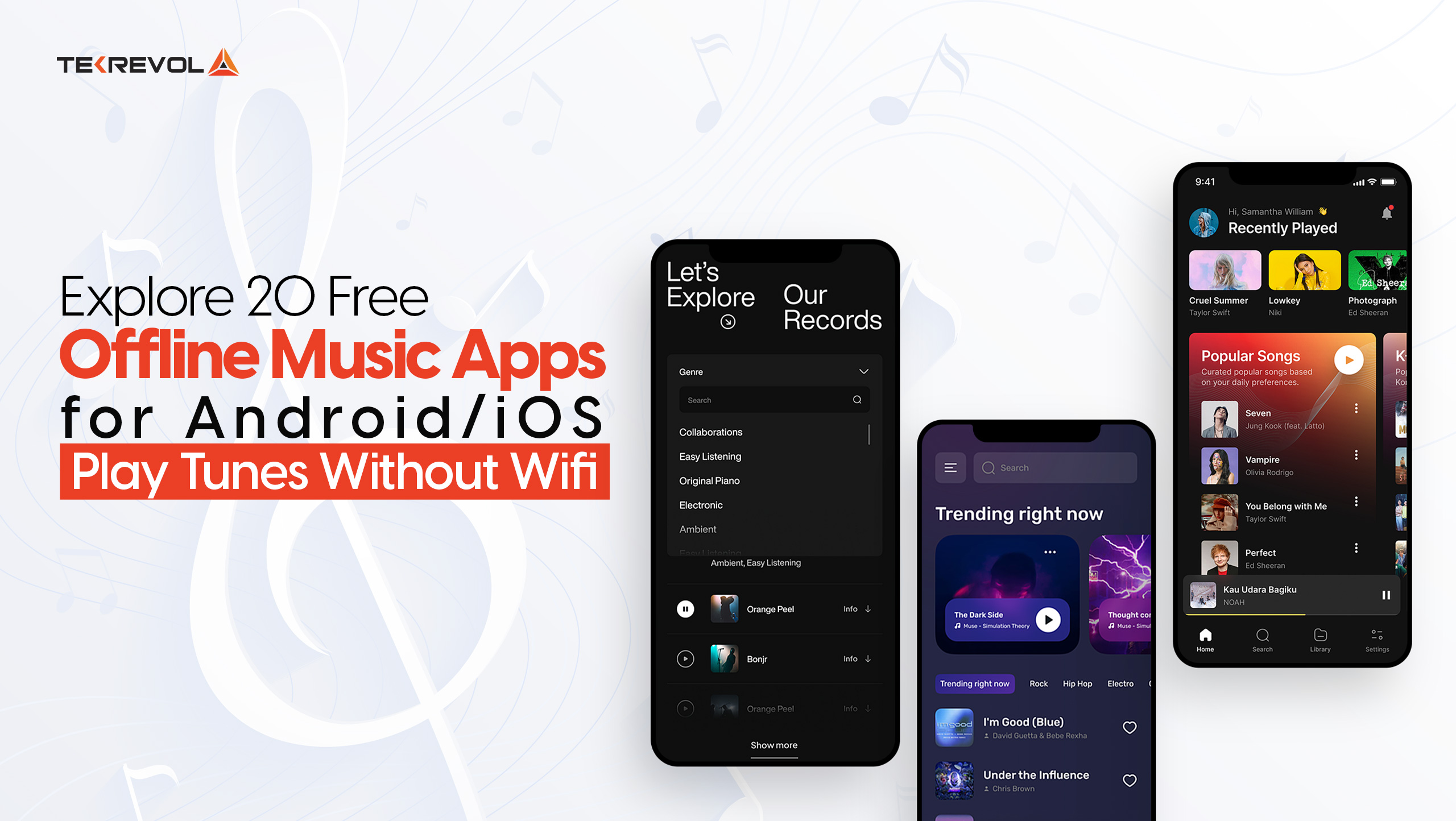Social media has become a non-negotiable part of modern business. With over 4.9 billion users worldwide and 54% of consumers using social media platforms to research products.
But still, a staggering 67% of marketers struggle to measure the ROI of their social media efforts effectively. The challenge? Tracking the right Key Performance Indicators (KPIs).
Imagine, You’ve just launched a social media campaign for your latest product. Likes, shares, and comments are pouring in, but do these numbers reflect actual business growth? nderstanding your campaign’s true impact means looking beyond surface-level engagement and aligning your efforts with measurable outcomes. By focusing on the right metrics, you’ll uncover what’s driving success, what needs adjustment, and how to optimize your campaign.
In this blog, we’ll break down the essential Key Performance Indicators (KPIs) that every business should understand.
An Overview of Social Media KPIs
Key Performance Indicator stands for measurable metrics that organizations use over time to determine success.
Social media KPIs operate as strategic benchmarks to maintain marketing direction while showing the level of success achieved with your marketing efforts. They help answer a critical question: Are your efforts helping you achieve your goals?
KPIs are more strategic than traditional social media metrics. Tracking numbers like followers or likes are not all they’re about, they’re about meaningful progress. An example would be KPIs that entail predefined targets such as attaining a particular engagement rate, boosting conversions, or widening the audience reach.
Companies achieve precise strategy optimization through these indicators while delivering exceptional content without unnecessary social media time consumption.
Keep in mind that the success of your social media marketing strategy requires choosing the appropriate KPIs that precisely match your objectives.
Why Are Social Media KPIs Important?
The use of KPIs enables you to create an organized path for your social media strategy. Companies can determine productive areas of focus along with unproductive areas through these KPIs to shape their efforts and strategy. KPIs serve as your navigation system so you don’t make your content decisions without knowing their impact.
According to data, 91% of businesses use social media platforms yet 60% experience difficulties measuring their return on investment. It can lead to wasted resources and missed opportunities.
By focusing on the right KPIs, you can:
- Align your social media efforts with business goals.
- Justify your social media budget with clear data.
- Identify trends and optimize your strategy in real-time.
Different Types of KPIs and How to Use Them
Businesses use Key Performance Indicators (KPIs) in different styles for unique business functions. Each KPI category works with different areas and teams while following distinct measurement periods. Here’s a breakdown of the most common types of KPIs and how they are applied:
1. Strategic KPIs: Measuring High-Level Goals
Strategic KPIs give executive leadership insight into a company’s overall performance. They provide executives with high-level details about long-term goal progress without drilling into individual aspects.
Who uses them? Executives and senior leadership.
Examples:
- Return on Investment (ROI): This metric evaluates profitability from investment projects.
- Profit Margin: This measurement shows what revenue stays in profit after all costs are paid.
- Total Revenue: Total Revenue shows how much money the business earns.
Tip: Strategic KPIs can be used to align organizational goals and effectively convey results to stakeholders.
2. Operational KPIs: Focusing on Short-Term Performance
Operational KPIs monitor performance updates like the progress of daily, weekly, or monthly tasks. Businesses use these measurements to check how their particular operations and team units perform and deal with urgent issues.
Who uses them? Mid-level managers and team lead.
Examples:
- Daily Sales Volume: Measures how many items customers buy per day.
- Customer Support Response Time: The KPI shows how promptly customer support reacts to requests.
- Product Defect Rates: The system checks product quality results instantly.
Tip: Review operational KPIs regularly to spot patterns and take care of problems before they become more serious.
3. Functional KPIs: Targeting Specific Departments
Functional KPIs cater to specific department requirements across an organization. The indicators serve both functional and strategic analysis requirements based on specific use settings. The results aim to deliver actionable details that help individual departments work better.
Who uses them? Department managers and staff members use these metrics.
Examples:
- Marketing: Click-Through Rate (CTR) of email campaigns.
- Finance: Number of invoices processed within a week.
- HR: Employee Turnover Rate per quarter.
Tip: To ensure continuous performance tracking, encourage departments to set up valuable KPIs that support the general company objective.
4. Leading and Lagging KPIs: Predicting vs. Analyzing Trends
These KPIs measure how quickly businesses receive their data insights. When leading KPI trends show upcoming changes businesses can respond ahead of time. These KPIs take data from completed actions to review previous business achievements.
Who uses them? Used extensively by teams concentrating on future predictions and past analysis.
Examples:
- Leading KPI: A rise in customer inquiries often indicates potential future demand.
- Lagging KPI: Net profit margin reveals the outcomes of past operational strategies.
Tip: Combine both leading and lagging KPIs for a balanced approach to planning and assessment.
Top KPIs to Focus on for Social Media Performance
The right social media performance indicators form the foundation for running effective marketing campaigns. By monitoring these measures you can see if your strategy works and make necessary changes to stay on track with your business plans.
Engagement Rate
The extent of audience connection with your content demonstrates its worth via social media engagement. Readers connect with your postings, indicating how much they enjoy your content. Examine your content strategy when your Instagram post obtains 10,000 views but just 100 likes.
How to Measure It:
Engagement rate = (Total engagements / Total impressions) x 100
Why It Matters:
The number of audience interactions shows that your content connects well with followers creating better brand commitment.
2. Reach and Impressions
The user reach metric counts actual audience members who view content, but impressions record total content views even when individuals view it more than once.
Why It Matters:
Your reach statistics show audience growth while impressions show how well your content performs for existing followers.
3. Click-Through Rate (CTR)
CTR measures how often people click on a link in your post compared to the number of times they saw it.
How to Measure It:
CTR = (Clicks / Impressions) x 100
Why It Matters:
Users who click on your content to perform desired activities like website visits or newsletter sign-ups demonstrate successful performance measured by click-through rate.
4. Customer Acquisition Cost (CAC)
The Customer Acquisition Cost (CAC) indicator reveals your entire expenditure for acquiring clients through social media promotions.
How to Measure It:
The CAC ratio highlights the total amount spent on social media advertising per new client acquisition.
Why It Matters:
Measuring your CAC shows you where to invest in ads and improves your advertising revenue.
5. Social Share of Voice (SSoV)
SSoV helps you see which brands people are talking about more when they post about your business and competitors.
Why It Matters:
Measuring social share of voice shows you where your business stands in the market and how successful your campaigns match up to your competitors.
- Struggling to measure your marketing results?
- Our team of experts can help you track key metrics and optimize your strategy for better outcomes.
Why Key Performance Indicators Are Important for Business Success?
Monitoring Key Performance Indicators helps improve business performance both for short-term activities and future growth planning. Here’s how KPIs can positively impact your business:
1. Promotes Clear, Actionable Goals
When businesses use KPI data effectively they need to specify their goals first. Instead of building systems randomly, companies can develop their strategies to achieve specific goals. Well-defined goals help companies choose effective methods for planning and achieving results.
2. Supports Data-Driven Decision-Making
KPIs clearly define performance through measurements of what your business needs to improve. Businesses can use KPIs effectively to identify areas where action is needed instead of guessing or assuming. Using real data helps companies create solutions better because their strategies depend on measurable results.
3. Enhances Employee Accountability
By providing team members with precise, quantifiable objectives, KPIs encourage excellent team performance. Workers are given clear performance standards so they can comprehend their goals and track their progress over time. KPIs ensure a fair assessment because they define clear performance goals that eliminate personal feelings from judgment.
4. Tracks and Measures Progress Toward Goals
The Key Performance Indicators reveal real performance changes that demonstrate how organizations achieve their strategic plans. Companies struggle to follow their business objectives without proper measuring methods. Using KPIs helps businesses detect changes in performance early so they can modify their plans while matching team efforts to company-wide goals.
5. Enables Continuous Improvement
Regular KPI monitoring helps you reach immediate targets and makes your improvement process successful. Measuring KPIs reveals organizational strengths and weaknesses that drive ongoing improvement efforts.
Most Effective Social Media KPIs That Every Marketer Should Prioritize
Nowadays, social media analytics has become the backbone of data-driven marketing, where additional informative insights can be achieved. However, the challenge here is which measurements best support the optimization of a campaign and the gratification of the clients. Here, we’ll discuss social media KPIs every business should prioritize for tangible results.
1. Follower Growth
The number of new followers shows how your social media audience grows each time. A steady increase in followers shows that your content works and you reach more people. Examine your social media following development to learn what types of content attract your target market.
Example: When your campaign leads to more followers you can use those results to develop new approaches that achieve the same outcome.
2. Organic vs. Paid Growth
The comparison of your organic vs paid followers helps you determine what works best for your social media efforts. Your real audience engagements form the base of your growth whereas your sponsored ads boost your follower counts. Breaking down results between different growth methods helps you see exactly how well our money is spent.
3. Engagement Through Likes
Likes hold strong power as an indication of how well your content engages your audience. When more people like your content it shows that your strategy works and indicates what future campaigns should focus on.
4. Understanding Audience Demographics
Understanding your audience’s specific background helps you produce content that matches what they want to see. Your content will receive less audience response and financial returns when your approach does not match their preferences.
Insight: Younger audiences might prefer memes or short-form videos, while older demographics may favor detailed articles or infographics.
5. Targeting Through Audience Geographics
Studying audience location helps you create content that reaches people better during their most active periods. Changing your posting schedule to match the different time zones of your main audience can lead to a better connection with them.
6. Measuring Reach
Reach shows you how many new people see your published material. Increased reach demonstrates that your promotional efforts make your brand more visible and attract new followers.
7. Impressions
Impressions track how often your content is shown on users’ feeds. A significant number of impressions can highlight the potential for sharing the content across different channels to boost exposure.
8. Shares
Users who share your content can make it reach more people beyond your first audience. The number of times people share your content proves it has genuine value and keeps audiences connected with it.
Tip: Examine the performance of content that received high sharing counts to identify components you can replicate in upcoming campaigns.
9. Clicks
Click activity on your posts shows how well your content motivates users to take action like exploring products or signing up for newsletters. Your content strongly connects to what people want to read and hear about.
10. Comments
When your audience adds comments to your posts it shows they want to actively participate in the content. They let you understand what your audience thinks and prefers about your content.
11. Engagement Rate
Engagement rate shows how many people interacted with your content by liking, sharing, and commenting compared to how many followers you have. When people relate to your content more often this shows that it’s effective for your followers.
12. Video Views
Video content dominates the digital realm so keeping count of views shows what captures viewer attention. People are more likely to connect when content has good storytelling and visual appeal.
13. Social Traffic
Social traffic helps you track how many users visit your website because they found it on their favorite social apps. Tools such as Google Analytics let you see where social media campaigns send visitors to your website better.
14. Conversions
Social media performance shows whether your online activities successfully attract people to take real-world actions such as making purchases or joining. It reveals whether your social campaigns produce effective results.
15. Revenue from Social Media
Revenue generated through social platforms highlights the financial impact of your strategies. When paired with ad spend data, it helps calculate ROAS (Return on Ad Spend).
16. Social Media ROI
Social Media ROI helps determine the profitability of your strategy by comparing the income it generates to the costs involved, highlighting its financial sustainability.
Note: The real impact comes from understanding how these metrics connect. Applying this knowledge to optimize campaigns leads to client success. It’s better to partner with a digital marketing agency for better results.
How to Plan and Track Effective Social Media KPIs
Making good social media KPIs helps you track how effective your marketing campaigns are. Follow these steps to ensure your KPIs drive meaningful results:
1. Connect KPIs to Business Objectives
A social media key performance indicator should directly help you reach the main goals of your company. Start by asking yourself: What specific results should our social media actions deliver?
When your primary goal is to get people to visit your website via social media, you should track how frequently users click on your social media posts. Improve engagement by creating content that adds value without requiring users to leave the platform.
Tip: Always link KPIs to specific business goals for clarity and focus.
2. Benchmark Against Competitors and Industry Standards
Use performance data from other companies to create achievable targets for your business. Benchmarking systems let you examine important performance indicators including how your audience grows and whether they interact with your content.
Start with this basic data to discover your performance level and target better results. Using benchmark data helps you understand industry standards so you can create realistic KPIs that compete effectively.
Tip: Look at both general industry trends and direct competitors to gain actionable insights.
3. Establish SMART Goals
KPIs should always follow the SMART framework to ensure they are effective:
- Specific: Create a measurable target to grow your followers by 15% over three months.
- Measurable: Use analytics tools to measure your performance.
- Attainable: Set your metrics to match your available resources and existing performance data.
- Relevant: Make your KPIs support your long-term business objectives.
- Timely: Decide how long you need to reach your performance target.
Tip: SMART goals help your team stay on track while showing them how to achieve their targets.
4. Focus on the Right Metrics
Choose performance indicators that accurately show how you want to achieve your targets. To assess brand awareness performance you should measure how many people saw your videos and content. To enhance customer interaction select the metrics that track comments, social shares, and click-through actions.
When defining KPIs, be specific. Instead of “improve engagement,” set a target like “increase post engagement by 20% within three months.”
Tip: Tailor metrics to match your goals for accurate measurement and insights.
5. Monitor Performance Regularly
Consistently tracking your key performance indicators helps you see how you perform and what needs improvement. Check your analytics tools to see what works and what needs fixing across your social media content. Take action by updating your content plan or social media approach after you gain new insights.
Tip: Check your performance regularly so you can respond quickly to new market conditions.
6. Reassess KPIs Periodically
Make sure to monitor your social media progress while also updating your performance standards as your business expands. Update your measurements based on alterations to social media algorithms and platform updates. Also, use performance data to detect audience trends and change your strategies accordingly.
Tip: Meet with your team to ensure that your performance indicators continue to support your desired objectives.
- Is your social media performance aligned with your business objectives?
- TekRevol's expertise can help you integrate the right KPIs for maximum impact.
Wrapping Up
We have analyzed social media KPIs extensively but digital marketing extends beyond these elements. Within a digital marketing system, social media, SEO, and PPC function as interconnected components. Each performs its unique movements simultaneously, functioning as an artistic performance.
If your company needs support measuring results or creating SEO, PPC, and social media strategies TekRevol offers professional social media marketing services. Our team builds combined SEO PPC and social media approaches that make all parts of your digital business support one another. Integrating all digital marketing channels creates better campaigns that perform better for a more powerful online presence.
Would you like to explore how TekRevol can help fine-tune your digital marketing strategy? Consult with our Marketing experts!
- Need a clear roadmap for your marketing success?
- We help you connect the dots with SEO, PPC, and social media strategies that work together.

